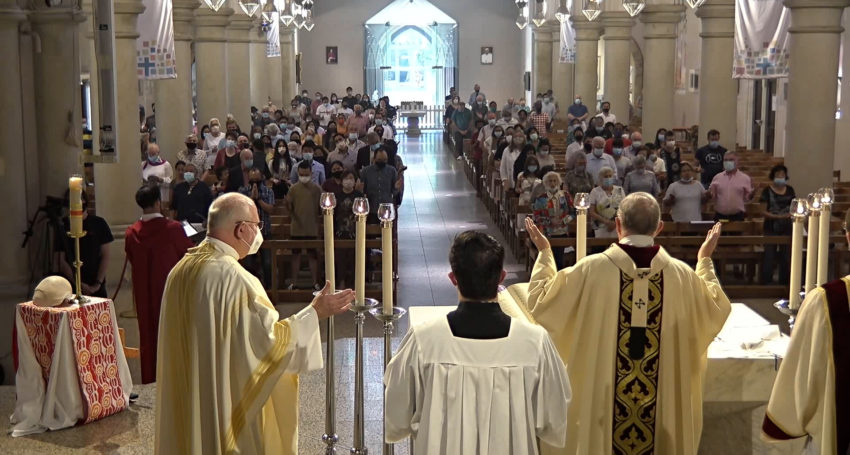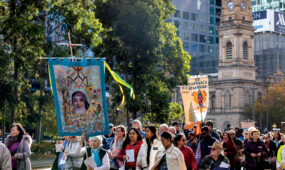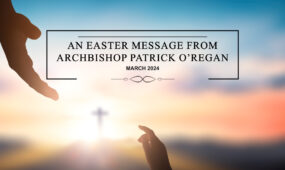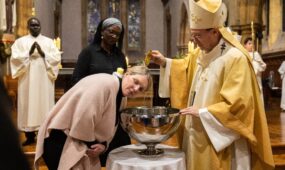Kneel, sit, stand
Opinion
The postures of participants in the assembly at Mass can feel routine for those who attend regularly: stand for the Alleluia and proclamation of the Gospel, sit for the homily and stand for the Creed, etc. On the other hand, if you’ve ever been to a Catholic wedding or funeral, you have most likely witnessed family and friends who are less familiar with the actions and responses, gathering uncomfortably in the pews, looking around the room for prompts from the regulars.

It is nerve-wracking to be a part of an unfamiliar ritual and not being sure of your role. Some may feel particularly uncomfortable when it comes time to kneel. It is a posture of vulnerability. A posture of penance, where we say ‘I’m sorry for my mistakes’, ‘I know I am an imperfect human’. If you’re a first-time church visitor and the presider says ‘please kneel’, it’s natural to decide ‘this bit isn’t for me, I’ll just watch’.
Advertisement
Each posture we assume at Mass underlines and reinforces the meaning of the action in which we are participating at that moment in our worship.
Postures have profound meaning and, when done with understanding, they enhance our personal and communal participation in Mass. Standing is a sign of respect and honour, so we stand as the celebrant enters and leaves the assembly, for the proclamation of the Gospel, the Creed, for moments during the Liturgy of the Eucharist and for the prayer after Communion.
It is also a sign of our own dignity, since when we stand for prayer we assume our full stature before God, not in pride but in humble gratitude for the marvellous thing God has done in creating and redeeming each one of us. Sitting is the posture of listening and meditation, so the congregation sits for the pre-Gospel readings, the homily and may also sit for the period of meditation following Communion.
Gestures such as the sign of the cross are taught to us as young children and we often begin and conclude our prayer with this very familiar action. Because of how routine this action feels to us though, we often find ourselves rushing or making a general shape of a cross in front of our bodies but missing the landmarks. When we fall into ‘routine’ it is easy to lose sight of the meaning.
Fr Romano Guardini, a scholar and professor of liturgy, writes of the sign of the cross:
‘When we cross ourselves, let it be with a real sign of the cross. Instead of a small, cramped gesture that gives no notion of its meaning, let us make a large, unhurried sign, from forehead to breast, from shoulder to shoulder, consciously feeling how it includes the whole of us, our thoughts, our attitudes, our body and soul, every part of us all at once, how it consecrates and sanctifies us…’ (Sacred Signs, 1927)
Advertisement
Church communities may want to offer laminated Order of the Mass cards in the pews to guide those who are unsure of our postures and gestures as a sign of hospitality and an opportunity for catechesis.
When we participate in Mass, let us stand in awe and wonder that people have gathered, united in a faith that promotes love, hope and forgiveness, ready to be renewed by God’s Word and the Eucharist. Let us make an intentional sign of the cross. Sit, open for a time of meditation and listening and kneel (if able) with a heart full of gratitude for God’s mercy.
This is why we pray with postures: to bring fullness to our celebration.
Lauren Bierer is liturgy educator with the Office for Worship








Comments
Show comments Hide comments